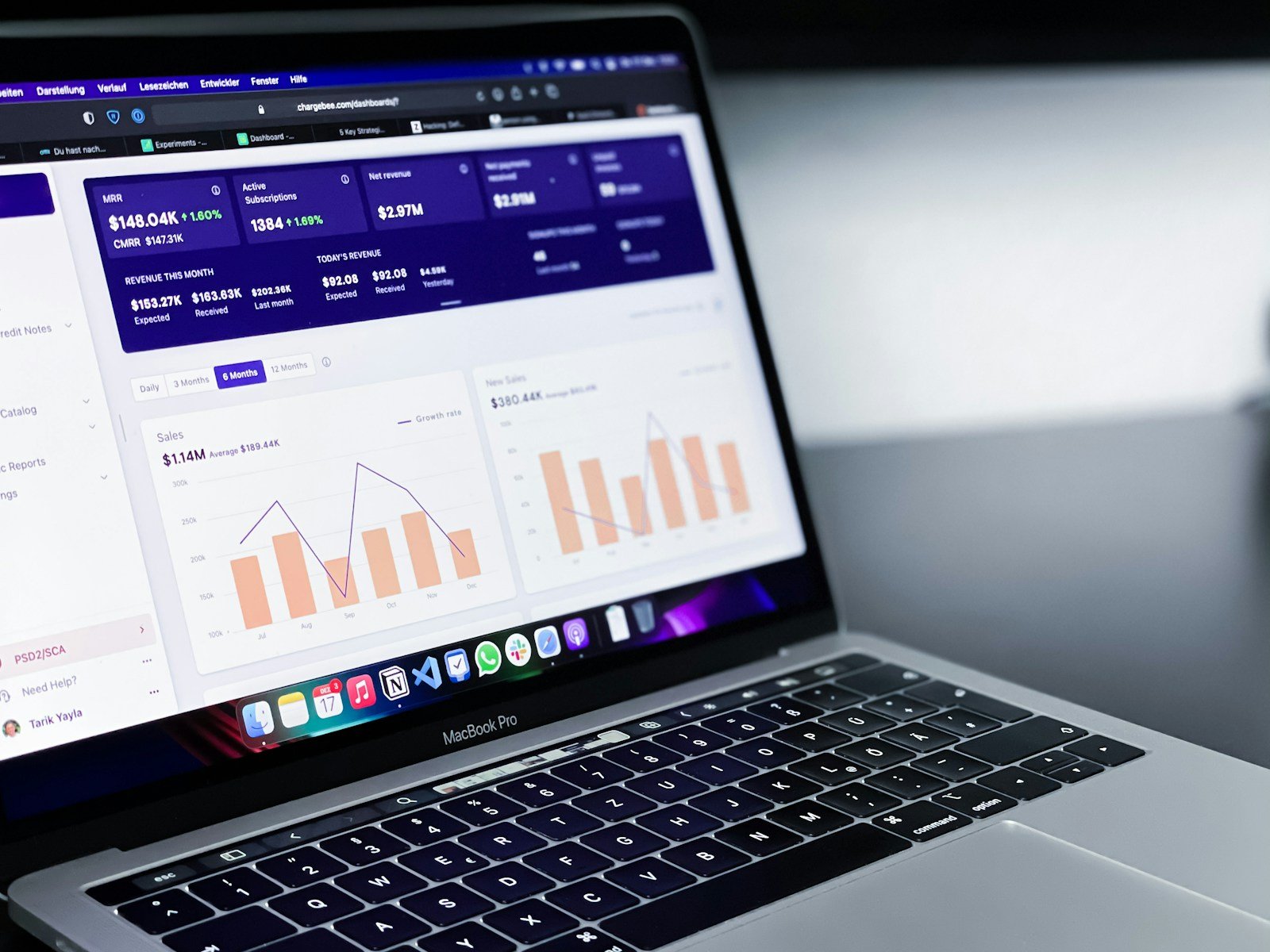Social media analytics tools help brands track and understand their online presence. These tools gather data about followers, engagement, and content performance across platforms like Facebook, Instagram, and Twitter. Choosing the right social media analytics tool can save businesses time while providing valuable insights to improve their marketing strategy and connect better with their audience.
Many top social media analytics tools offer features like custom reports, competitor analysis, and trend tracking. Some focus on specific platforms while others provide a more complete view across all social channels. The best tool for any brand depends on their goals, budget, and which social networks matter most to their business.
1. Sprout Social
Sprout Social ranks as one of the top social media analytics tools available today. It provides businesses with comprehensive insights about their social media performance.
This platform offers deep data analysis that helps companies understand what content works best with their audience. Users can track engagement metrics, follower growth, and content performance all in one place.
One standout feature is Sprout’s Advanced Listening tool, which gives valuable information about audience demographics and industry influencers. This helps businesses make smarter decisions about their social content.
Companies can also measure campaign performance effectively with Sprout Social. The platform shows clear returns on investment for social media efforts, making it easier to justify marketing spending.
Sprout Social’s Premium Analytics tools allow users to select metrics that match their specific business goals. This customization helps teams focus on what matters most to their company’s success.
The reporting features are particularly useful for presenting results to stakeholders. Users can create presentation-ready reports that clearly show social media impact in a professional format.
Many businesses choose Sprout Social because it helps them identify market trends and understand customer preferences. This information guides better content creation and engagement strategies.
Sprout Social has earned recognition in the industry, being named G2’s #1 Best Overall Software Product for 2024. This speaks to its reliability and effectiveness as an analytics solution.
The platform integrates with major social networks, making it convenient for teams managing multiple accounts. Users can analyze data from different platforms through a single dashboard.
For businesses looking to improve customer relationships, Sprout Social offers tools to help them respond effectively to audience needs. The insights gained often lead to better customer service and engagement.
2. Hootsuite
Hootsuite stands as a powerful option for businesses seeking comprehensive social media analytics. This platform combines management features with strong analytics capabilities in one dashboard.
Hootsuite Analytics helps track performance across all your social channels in a single place. Users can monitor hundreds of social media metrics to understand what’s working and what needs improvement.
The platform excels at competitor analysis. All Hootsuite plans include social media competitive benchmarking, which helps businesses understand how they stack up against others in their industry.
One helpful feature is the publishing time recommendations. Hootsuite analyzes your audience data and suggests the best times to post based on when your followers are most active.
Cross-platform reporting is another strength. The tool offers powerful analytics for Facebook and other major platforms, making it easier to compare results across different channels.
The tool provides ROI tracking capabilities. This helps marketing teams show the business value of their social media efforts and justify their budgets to leadership.
Some users on Reddit note that while Hootsuite is good for social media management, it comes with “a big price tag” and may lack some newer features found in other tools.
Hootsuite offers various pricing tiers to accommodate different business sizes. Smaller teams can start with basic plans, while larger organizations might need the more robust enterprise options.
The interface is user-friendly but may take time to learn fully. Most users find the dashboard layout logical once they become familiar with it.
Reports can be customized to show the metrics that matter most to your team. This flexibility helps focus on key performance indicators rather than getting lost in data.
Hootsuite integrates with many other marketing tools, creating a more connected workflow for marketing teams using multiple platforms.
3. Sendible
Sendible stands out as a powerful social media analytics tool designed especially for marketing agencies. Its comprehensive features make tracking performance across multiple platforms simple and efficient.
The platform offers a user-friendly Reporting Hub that gives users an engagement overview with just one click. This saves valuable time when managing multiple client accounts.
Users can create branded reports that look professional and showcase their clients’ social media performance. The customization options let you add logos and adjust colors to match client branding.
One of Sendible’s best features is automated reporting. Set up reports once and the system will send them to clients on schedule without extra work from you.
Sendible works with all major social networks including Facebook, Instagram, and Twitter. This makes it a great all-in-one solution for agencies managing different platforms.
As one of the top 10 tools on G2, Sendible helps marketers schedule posts, monitor engagement, and create detailed performance reports. The analytics show what content works best and when to post for maximum reach.
The platform provides in-depth insights that help users understand audience behavior. These insights lead to better content strategies and improved social media performance.
Compared to other options like Sprout Social, Buffer, and Agorapulse, Sendible offers a good balance of features and value. It’s particularly strong for agencies handling multiple client accounts.
The insights hub offers extra resources with tips and strategies to improve social media management. Users can learn new techniques while using the platform.
Pricing is flexible with different plans based on the number of clients and services needed. This makes Sendible accessible for agencies of various sizes.
The interface is straightforward and doesn’t require extensive training. New team members can quickly learn how to use the essential features.
4. Google Analytics
Google Analytics stands as one of the most widely used free analytics tools available for businesses. While many think of it primarily for website tracking, it also offers valuable insights for social media campaigns.
The platform helps track how social media drives traffic to your website. You can see which platforms bring the most visitors and which content gets the most engagement after users click through.
Setting up Google Analytics is straightforward. Once installed on your website, it automatically begins collecting data about your visitors, including those coming from social media channels.
One major benefit is the ability to track conversions. You can see if people from Facebook, Instagram, or Twitter are more likely to buy your products or sign up for your newsletter.
The tool also shows you user behavior patterns. See how long social media visitors stay on your site and how many pages they view compared to visitors from other sources.
Google Analytics provides comprehensive reporting features that help measure your overall marketing ROI. This makes it easier to determine which social channels deserve more of your time and budget.
Recent updates to Google Analytics have improved its social media tracking capabilities. The platform now offers better integration with major social platforms for more accurate data collection.
Custom dashboards let you focus on the metrics that matter most to your business. You can create views that highlight just your social media performance if that’s your priority.
The best part? Google Analytics is completely free of charge. This makes it accessible to businesses of all sizes, from small startups to large enterprises.
When combined with other social-specific tools, Google Analytics provides the complete picture of your social media impact. It connects your social efforts directly to your business outcomes.
Learning to use Google Analytics effectively does take some time. However, Google offers plenty of free training resources to help you master the platform.
5. Keyhole
Keyhole is a social media analytics tool that helps brands track their online presence across multiple platforms. It stands out by offering real-time monitoring capabilities for all major social networks including X, Instagram, Facebook, YouTube, LinkedIn, and TikTok.
The platform brings all your social media analytics together in one place. This makes it easier for marketing teams to see how their content performs across different channels without switching between multiple tools.
Keyhole’s main strength lies in its hashtag and keyword tracking abilities. Marketers can use these features to follow specific campaigns and measure their reach and impact.
The tool also offers social listening capabilities that help brands understand what people are saying about them online. This feature is particularly useful for reputation management and identifying emerging trends.
For companies working with influencers, Keyhole provides influencer tracking features. These help measure the effectiveness of influencer partnerships and identify potential new collaborators.
Keyhole creates visual reports that make complex data easier to understand. These reports can be customized and shared with team members or clients.
The platform aims to help users not just collect data but also gain actionable insights. It helps marketers improve their social media strategy based on performance metrics and audience behavior.
Many brands and agencies use Keyhole to prove the impact of their social media efforts. The tool provides concrete metrics that can show the return on investment for social media campaigns.
Keyhole updates its features regularly to keep up with changes in social media platforms. This ensures users always have access to the most relevant analytics tools.
The interface is designed to be user-friendly, making it accessible even for team members without technical expertise. This helps more people in an organization make data-driven decisions about social media.
6. BuzzSumo
BuzzSumo is a powerful content research and social media analytics tool. It helps businesses track their online presence and understand how their content performs across various platforms.
One of BuzzSumo’s key features is its ability to monitor competitors, brand mentions, and industry updates. This gives teams a clear picture of their standing in the market compared to others in their field.
The platform excels at showing content performance metrics. Users can quickly see how many shares their blog posts received on Facebook, Twitter, or Pinterest. This data helps teams understand which content types connect best with their audience.
BuzzSumo scans billions of articles and social posts to provide useful insights. These insights help content creators make more informed decisions about what to create next.
The tool offers alerts that ensure users don’t miss important events. These alerts help cut through the noise and catch key mentions that might otherwise get lost.
Content teams benefit from BuzzSumo’s ability to generate fresh ideas. The platform promises content ideas that are likely to succeed based on what has worked well in the past.
For brands seeking to understand their media presence quickly, BuzzSumo delivers. Their tagline highlights this speed: Media Mentions In Minutes. Content Ideas For Days.
Marketing teams can use these insights to craft content strategies with higher chances of success. By studying what works for both themselves and competitors, they can refine their approach.
The tool fits well into a broader analytics strategy. When used alongside other platforms, BuzzSumo helps create a complete picture of social media performance and content effectiveness.
7. Buffer
Buffer is a user-friendly tool for managing social media content. It helps businesses schedule posts and track their performance across different platforms.
Buffer’s analytics make social media reporting simple. You can build clean, branded reports with just a few clicks. This saves time when sharing insights with your team or clients.
The tool works with most major social networks. You can create and schedule content for multiple channels at once. This makes it easier to keep a consistent posting schedule.
Buffer’s content calendar gives you a clear view of what’s going out and when. You can spot gaps in your posting schedule and fill them with new content ideas.
One helpful feature is the ability to repurpose top-performing posts. Buffer helps you identify what worked well so you can create similar content in the future.
For small teams and businesses, Buffer offers a straightforward approach to social media. It doesn’t have all the bells and whistles of some competitors, but it does the basics very well.
Many users praise Buffer for its straightforward social media scheduling capabilities. The clean interface makes it easy to learn and use right away.
The analytics dashboards show key metrics that help track growth. You can see which posts get the most engagement and adjust your strategy based on real data.
Buffer also includes an AI Assistant to help create content. This can be useful when you need fresh ideas or want to save time writing posts.
The free plan offers basic features for individuals, while paid plans unlock more posting slots and advanced analytics. This makes it accessible for businesses of all sizes.
8. Meltwater
Meltwater is a powerful social media monitoring tool that helps brands track online conversations. It scans billions of social media posts to find mentions of your brand, competitors, and industry trends.
The platform offers deep analytics that turn social data into useful insights. Users can easily identify their most engaged followers and understand audience behavior across different platforms.
Meltwater’s real-time tracking system alerts users when important conversations happen. This quick response ability helps companies manage their online reputation and jump into discussions at the right time.
The tool also includes a social media management feature that streamlines posting and engagement. Teams can create, schedule, and track all their social activities in one place, saving time on everyday tasks.
For PR professionals, Meltwater provides refined media monitoring with in-depth filtering options. These features help companies find the most relevant mentions in news and social media.
What makes Meltwater special is its wide coverage. The platform monitors traditional news, blogs, forums, review sites, and all major social networks. This gives users a complete picture of their online presence.
Meltwater ranks among the top social media monitoring tools for 2025, alongside competitors like Sprout Social, Hubspot, and Hootsuite. Its comprehensive approach works well for businesses of various sizes.
The platform’s dashboard presents data in clear, easy-to-understand charts and reports. These visuals help teams quickly spot trends and share findings with stakeholders who may not be data experts.
Meltwater updates its features regularly to keep up with changing social media platforms. This ensures users always have access to the latest monitoring capabilities and data sources.
9. Zoho Social
Zoho Social is a social media management tool that helps businesses grow their online presence. It offers a range of features designed to simplify social media tasks for marketers and business owners.
The platform includes powerful social media analytics that measure what matters most to brands. Users can track engagement, reach, and follower growth across multiple platforms all in one place.
One key feature is the ability to better understand your audience. The tool provides insights about who follows your brand, when they’re most active, and what content they prefer.
Zoho Social also helps identify your best-performing content. This makes it easier to create more of what works and less of what doesn’t.
The monitoring capabilities let businesses track important keywords and conversations in real-time. This helps brands stay on top of mentions and engage with customers quickly.
For teams that manage multiple brands, Zoho Social offers collaboration tools. Team members can work together, assign tasks, and approve content before it goes live.
Zoho Social connects with popular platforms like Facebook, Twitter, Instagram, LinkedIn, and more. This integration streamlines posting and reporting across all channels.
The analytics dashboard provides easy-to-understand reports. Users can analyze audience preferences, post performance, and even competitor strategies with just a few clicks.
Scheduling posts ahead of time saves marketers valuable hours. The best times to post are suggested based on when your audience is most likely to see and engage with content.
Zoho Social works well for both small businesses and agencies. Its pricing is competitive, and it offers a free trial for those who want to test the features before committing.
10. Semrush
Semrush offers a powerful social media toolkit that helps businesses manage their social presence effectively. Their social media management solution covers everything from scheduling posts to analyzing performance metrics.
The platform stands out with its comprehensive features. Users can plan, post, and analyze their social media activity all from one dashboard. This saves time and makes social media management simpler.
Semrush Social allows you to track how your content performs against competitors. This competitive analysis feature gives businesses insights to improve their social strategies and gain an edge in their market.
The social media poster is praised for being user-friendly. Many consider it intuitive and easy to use compared to other publishing and scheduling tools available today.
For businesses wanting to measure success, Semrush provides detailed analytics. The Social Analytics tool shows metrics for Facebook, Instagram, TikTok, and LinkedIn channels in clear reports.
Content scheduling is another key feature. Teams can plan and automate posts across multiple platforms, ensuring consistent content delivery without daily manual effort.
Semrush helps identify which content resonates with audiences. By analyzing engagement metrics, businesses can create more of what works and less of what doesn’t.
The tool also supports social listening capabilities. This helps companies stay aware of brand mentions and industry trends that matter to their audience.
Semrush ranks among the top social media monitoring tools for 2024. Its all-in-one approach makes it suitable for businesses of various sizes.
Key Features of Social Media Analytics Tools
Social media analytics tools come with several important features that help businesses track and improve their online presence. These tools offer ways to see data clearly, compare results across different platforms, and set up personalized views of information.
Data Visualization Capabilities
Good analytics tools turn complex data into easy-to-understand charts and graphs. Users can see trends at a glance without digging through spreadsheets. Most tools offer:
- Real-time tracking of engagement rates, likes, shares, and comments
- Visual comparisons between current and past performance
- Heat maps showing peak engagement times
- Growth charts tracking follower increases over time
These visual elements make it easier to spot patterns and share insights with team members. For example, a spike in engagement might point to successful content that should be repeated.
Tools like Agorapulse and Sprout Social offer strong visualization features that help users understand complex data quickly.
Cross-Platform Analytics
Most businesses use multiple social networks, making it hard to track performance across all channels. Cross-platform analytics tools solve this problem.
These tools gather data from different platforms like Facebook, Instagram, Twitter, LinkedIn, and TikTok into one place. This allows users to:
- Compare performance across different networks
- Identify which platforms work best for their content
- Track key performance indicators (KPIs) across all channels
- Save time by avoiding separate logins for each platform
Cross-platform tools help teams make better decisions about where to focus their efforts. They also make reporting much simpler by standardizing metrics across platforms.
Customizable Dashboards
Every business has unique goals for social media. Customizable dashboards let users focus on what matters most to them.
Top analytics tools allow users to:
- Choose which metrics appear on their main screen
- Create separate dashboards for different team members or clients
- Set up automatic alerts for important changes
- Arrange information in the most useful way
These ready-to-use insights help teams focus on the numbers that matter most. For example, a content creator might prioritize engagement rates, while a marketing manager might focus on conversion metrics.
A good dashboard saves time and helps teams spot opportunities or problems quickly without sorting through irrelevant data.
Importance of Real-Time Analytics
Real-time analytics gives brands immediate insights into how users interact with their social media content. This allows for quick adjustments to campaigns and better response to audience needs.
Enhancing Social Media Strategy
Real-time analytics helps brands make faster decisions about their social media content. Instead of waiting days or weeks to see results, marketers can get instant insights during campaigns. This quick feedback allows teams to adjust content that isn’t performing well or boost posts that are getting good engagement.
For example, if a brand notices a video is getting high view rates but low shares, they can quickly create similar content that encourages more sharing. This responsive approach helps brands:
- Optimize posting schedules based on when followers are most active
- Test different content types and quickly see what works
- Adjust campaign messaging based on immediate audience response
- Allocate ad spend more effectively by shifting budget to high-performing content
Many social media analytics tools now offer real-time dashboards that make these quick decisions possible.
Identifying Trends and Sentiments
Real-time analytics helps brands spot emerging trends and public sentiment as they happen. This allows companies to join conversations at the right moment rather than missing opportunities.
AI-driven analytics tools can monitor mentions, hashtags, and keywords across platforms to alert brands when something relevant is gaining traction. This immediate insight helps with:
- Crisis management and quick response to negative sentiment
- Identifying viral content opportunities
- Understanding shifting consumer interests
- Tracking competitor activities and reactions
Brands that use real-time social listening can spot problems before they become bigger issues. They can also jump into trending topics that align with their brand values at just the right moment.
Frequently Asked Questions
Social media analytics tools differ greatly in features, pricing, and effectiveness. Here are answers to common questions that will help you choose the right tool for your specific needs.
What are the top rated social media analytics platforms currently available?
The most highly rated analytics platforms include Sprout Social, which offers comprehensive reporting and competitor analysis. Many users praise its clean interface and depth of insights.
Rival IQ ranks high for its competitive benchmarking capabilities. It lets you track both your performance and that of competitors in one dashboard.
Hootsuite continues to be popular for its all-in-one approach to social media management and analytics. Its scheduling tools pair well with its performance tracking features.
Which free tools are most effective for analyzing social analytics?
Buffer offers a solid free plan that gives basic analytics across platforms. It works well for small businesses or beginners just starting with social analytics.
Each social platform’s native analytics also provides valuable free insights. Facebook Insights, Instagram Insights, and Twitter Analytics give useful data without any cost.
Google Analytics offers free website traffic analysis from social channels. It shows which social platforms drive the most traffic and conversions to your website.
How does Sprout Social compare to other analytical tools in terms of features and accuracy?
Sprout Social stands out with its presentation-ready reports and deep data analysis. Its competitor comparison features are more advanced than many alternatives.
The reporting accuracy of Sprout Social is generally considered among the best in the industry. Many users find its sentiment analysis more nuanced than other tools.
Pricing is higher than some competitors, but the comprehensive feature set justifies the cost for many businesses that need detailed analytics.
What capabilities should I look for when choosing a social media analytics tool?
Look for tools that offer cross-platform analytics to track all your social accounts in one place. This saves time and helps spot trends across platforms.
Good social media analytics tools should include competitor analysis, audience demographics, and engagement metrics. These features help understand your performance.
Consider tools that include report automation and scheduling features. These save time and make sharing results with team members or clients easier.
What specific advantages does Google Analytics offer for tracking social media performance?
Google Analytics excels at showing the actual business impact of social media. It tracks conversions, sales, and other valuable actions that come from social traffic.
The tool connects social efforts to website behavior, showing which platforms drive quality traffic. This helps prove ROI and justify social media spending.
Google Analytics also integrates with other Google tools like Google Ads. This creates a more complete picture of your digital marketing performance.
How reliable is Social Blade for providing in-depth social media analytics?
Social Blade offers good high-level growth data for YouTube, Twitch, and other platforms. It’s particularly useful for tracking subscriber or follower growth patterns.
The free version offers limited but helpful competitive analysis. You can quickly see how your channel compares to others in your category.
For truly in-depth analytics, Social Blade may need to be supplemented with other tools like HipSocial. Its strengths lie in tracking growth rather than engagement quality or conversion metrics.







